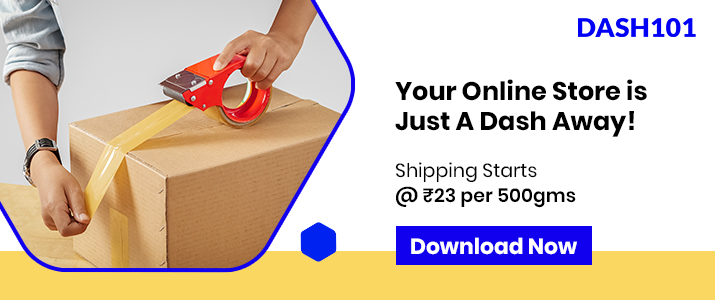Packaging can be a game-changer in ecommerce. It can take your business to the next level. However, it has also the potential to ruin your business and disrupt your customer experience. And that’s why you need to be careful about your packaging practices. If you are unable to pack your products well, chances are they will suffer damage in transit. As a result, your business will suffer a lot of losses. To avoid all of this, you must leverage the best packaging practices for the ecommerce business.
Understanding Different Packaging Scenario
Even though businesses have to deal with packaging every now and then, their role in ecommerce is slightly different. And that is where we need the best packaging practices for ecommerce. Take the retail scenario as an example first.
Retail Example
- When a customer walks in your store, they get a look and feel of the product. Based upon various factors they decide whether to purchase it.
- When they move forward with the purchase process, they bring the product to the billing table. Here, the customer waits for their turn and pays for the product using various modes of payment.
- The cashier then hands over the product to the customer. The customer quietly walks out of the store and a sale has been successful.
Did you find a packaging step anywhere in this simple retail demonstration? No! Because taking the product home is the customer’s responsibility and not that of the seller. The seller’s duties are fulfilled when the customer gets the product billed.
The question of how people take the products home is answered in two ways. Recently, most stores have denied free carry bags to the customers. This best practice in e-commerce packaging was a step taken to reduce the waste. Therefore, customers are expected to walk in with a bag of their own.
Once the billing process is over, they put the product in abag and walk out. Another option is to pay a certain amount for the available jute or paper bag at the store. And that’s that. Unless the product already comes with a box from the manufacturer, a paper bag is at most what the customer gets.
In other words, while the seller or the store is responsible for the quality of the product sold, they are not responsible for what happens once the customer takes it out. Excuse the case of manufacturing defects and the outliers. Therefore, the seller is happy that a sale is made, and the customer is happy that they received what they wanted.
eCommerce Example
The other case is that of ecommerce. In the context of e-commerce, the entire packaging scenario shifts. The customer has to no longer stand in the queues or spend time roaming around in the store instead this happens-
- The customer comes to your website and browses the products. They find something interesting, they want to buy.
- So, they add the product in their carts. Finally, they move to the checkout process. This is where they pay for the order amount and other relevant fees. The payment occurs through any of the modes such as wallets, UPI, cards, vouchers or cash on delivery.
- Once the customer pays for the product, they receive a confirmation email. Then the order is passed onto the seller.
- The seller has seldom any task until this moment. But, once the order is received, they have to make it deliver to the customer’s doorstep. And that’s where the hassle lies.
- The process starts with the seller picking up the product and keeping it on the workstation. Between the warehouse and the delivery destination, the package has to go through several processes. Therefore, the task at the hand of the seller is to prepare the product for the process. And that preparation is nothing but packaging.
- Once the order is packed, the courier is assigned to the parcel. They take it from the seller’s pick up address and finally deliver it to their doorstep.

The Real Importance of Packaging in eCommerce
No imagine what all can happen, if the product wasn’t packed? Had the seller put the item in a paper bag and sent it to the customer’s doorstep, the entire experience would have been ruined. And that’s because when in transit, the products have to be robustly packed. You cannot leave anything lying loose. If you do, your product night gets tampered with, damaged or stolen in the middle.
Packages in transit are not handled as softly. The pint is that courier companies have thousands of parcels to deliver. So, imagine if each parcel is unpacked, how much extra precautions and efforts would it take to carry out the process. This would in turn slow down the entire logistics process.
Sellers that compromise on their packaging are left with damaged products. And when these are delivered to the custom, the entire experience is disrupted. The customer refuses to accept the delivery in many cases. And all you’re left with are shipping costs and damaged products as a takeaway.
All these factors make packaging crucial to the existence of your business. In another scenario, if you don’t package your products in suitable boxes, you can end up paying extremely high shipping fees. We’ll talk about it more in the next section.


Conclusion
Best packaging practices for ecommerce businesses include a lot of details. It furthermore also depends on the type of packaging you’re interested in. While you invest in your packaging efforts, make sure you partner with a logistics provider like Dash101 to help you ship to 26000+ pincodes safely. With Dash101, you can ship your parcels safely with the best courier services in India at shipping rates starting Rs 23/500 gms.







Leave a Review